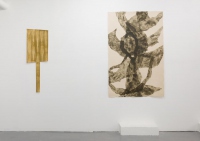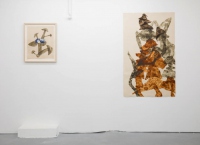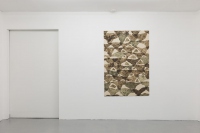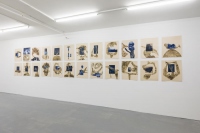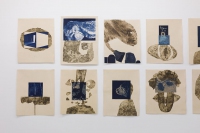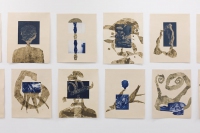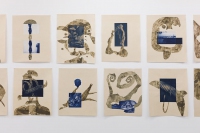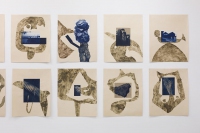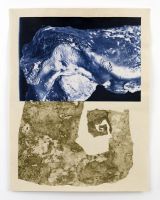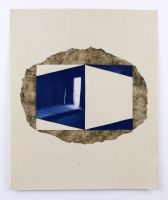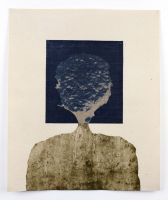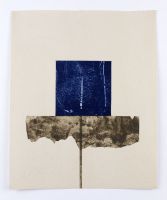Liquid Mountains
Exhibited at Wil Aballe Art Projects (WAAP), Vancouver, BC, April 27-May 27, 2017
https://www.waapart.com/portfolio/sean-alward-liquid-mountains/
Included in the exhibition Mantle at the Evergreen Cultural Centre, July 13-Sept.1, 2019
https://evergreenculturalcentre.ca/mantle/
Exhibition text:
Once upon a time…
This seems to imply a thing resting upon a larger thing. Is this larger thing linear, like a ribbon stretching backward and forward? Is it more like an endless flat sheet, stretching all around? Or is it like outer space, extending in all directions?
Once upon a time there were no mountains. They were pushed into the sky by colliding tectonic plates. The rock composing these mountains was formed from liquid magma, hot lava, bits of old rock, and the fossilized remains of creatures at the bottom of the ocean. The mountains will eventually be ground into dust through incessant weathering and glacial friction. Then, carried in rivulets of water and pulled earthward by gravity, deposited as sand or clay.
What does this clay look like? What is its form?
The clay beneath Vancouver is laid down in flattened layers, a pulverized version of the mountains surrounding the city. It is typically a cool grey colour, sometimes warmed to an ochre tint through the presence of oxides. Its particles were formed by the grinding action of ancient glaciers. We dig underground to see ice age mountain tops. The clay I have used for this project comes from various sites along the Fraser River, exposed by the river’s winding cut through the landscape.
If our lifespan was geological in scope, stretching over millions of years, we would see the mountains behave like the river, like liquid. We could watch them rise, take shape, change shape, and melt down again. They would be in constant motion, malleable, and plastic. The main thing leading us to perceive the material world as solid is our truncated perception of time. However, if we imagine time extending beyond ourselves, solid matter is liquid and it may also be time.
Sean Alward
